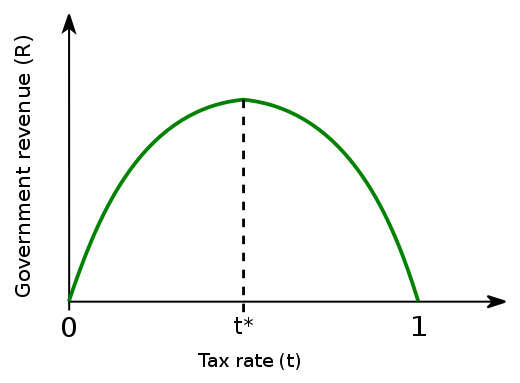
Government Revenue:
Observe:
In economics, the Laffer Curve illustrates a theoretical relationship between rates of taxation and the resulting levels of the government’s tax revenue. The The shape of the curve is a function of taxable income elasticity—i.e., taxable income changes in response to changes in the rate of taxation. As popularized by supply-side economist Arthur Laffer, the curve is typically represented as a graph that starts at 0% tax with zero revenue, rises to a maximum rate of revenue at an intermediate rate of taxation, and then falls again to zero revenue at a 100% tax rate. However, the shape of the curve is uncertain and disputed among economists.One implication of the Laffer curve is that increasing tax rates beyond a certain point is counter-productive for raising further tax revenue. Particularly in the United States, conservatives have used the Laffer curve to argue that lower taxes may increase tax revenue. However, the hypothetical maximum revenue point of the Laffer curve for any given market cannot be observed directly and can only be estimated—such estimates are often controversial. According to The New Palgrave Dictionary of Economics, estimates of revenue-maximizing income tax rates have varied widely, with a mid-range of around 70%.The Laffer curve was popularized in the United States with policymakers following an afternoon meeting with Ford Administration officials Dick Cheney and Donald Rumsfeld in 1974, in which Arthur Laffer reportedly sketched the curve on a napkin to illustrate his argument. The term “Laffer curve” was coined by Jude Wanniski, who was also present at the meeting. The basic concept was not new; Laffer himself notes antecedents in the writings of the 14th-century social philosopher Ibn Khaldun and others.